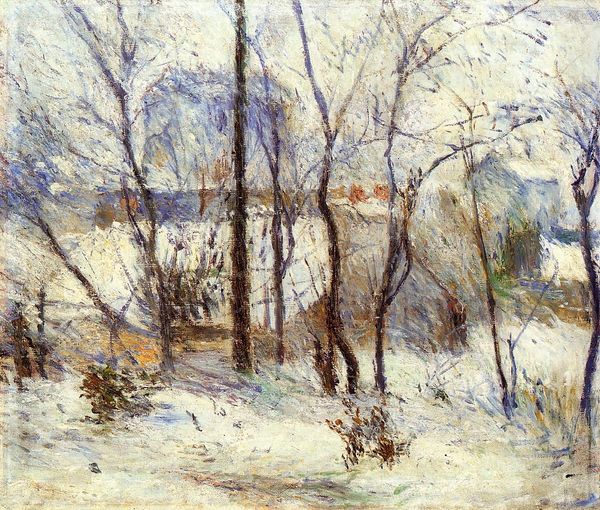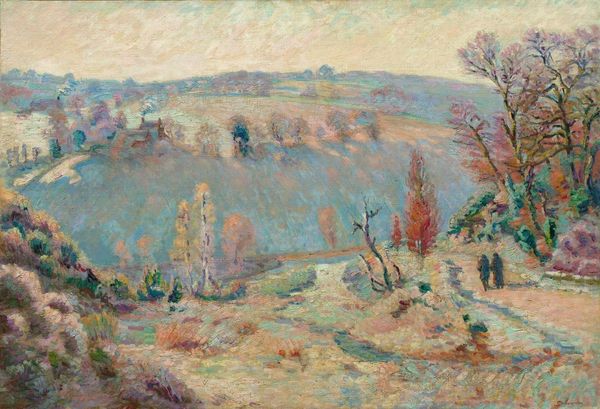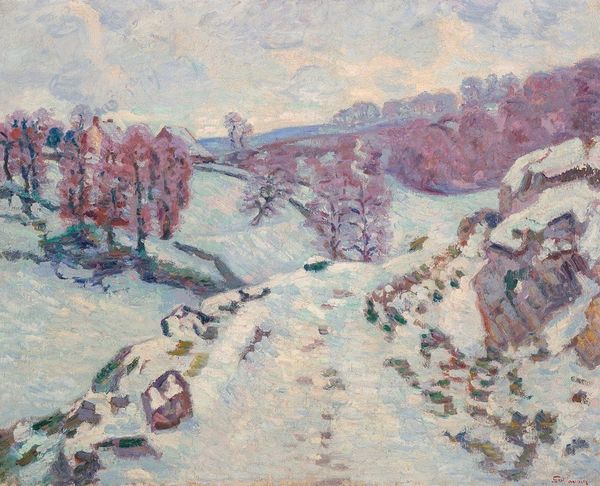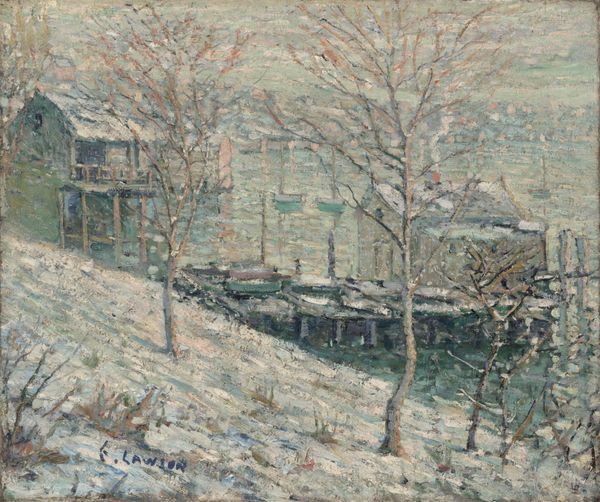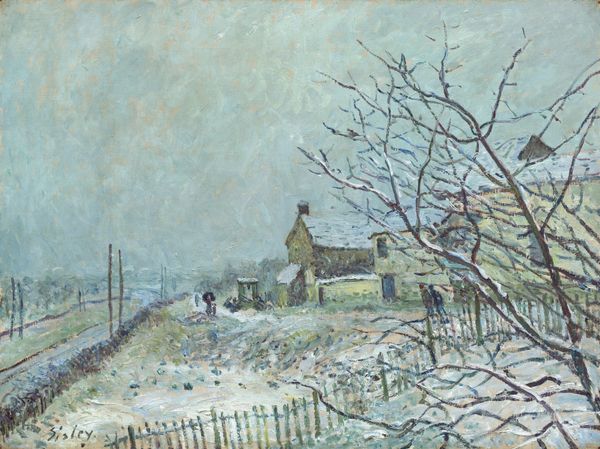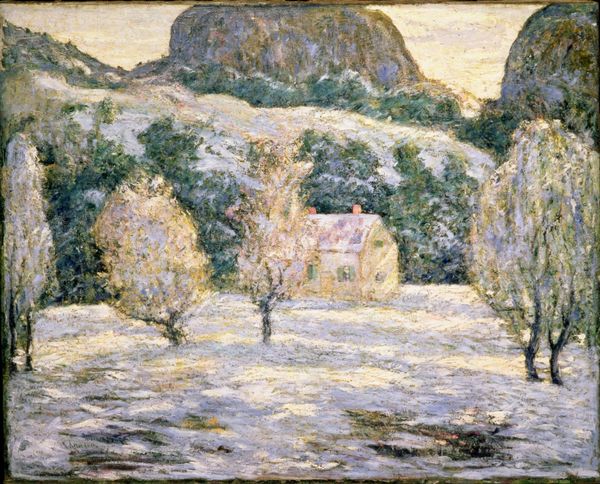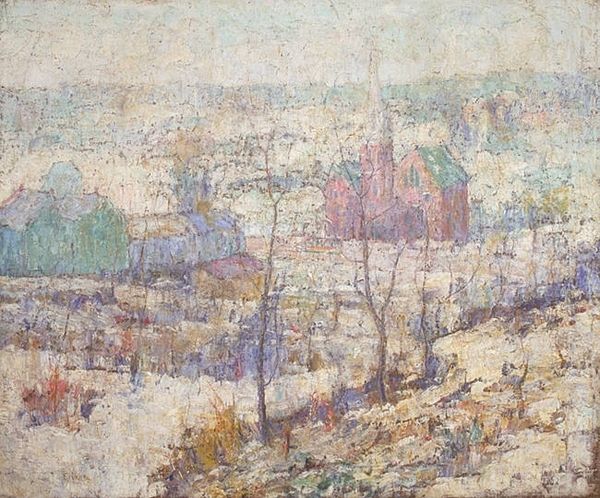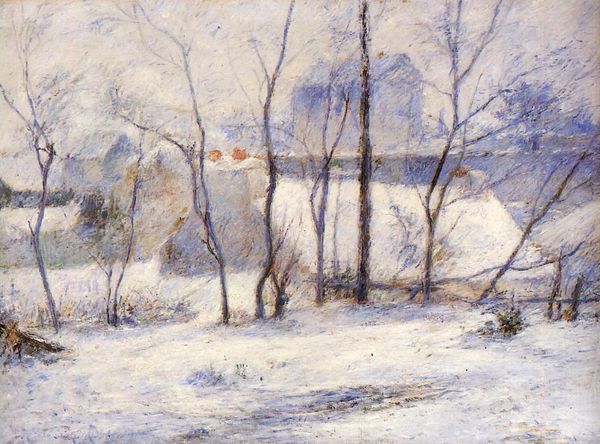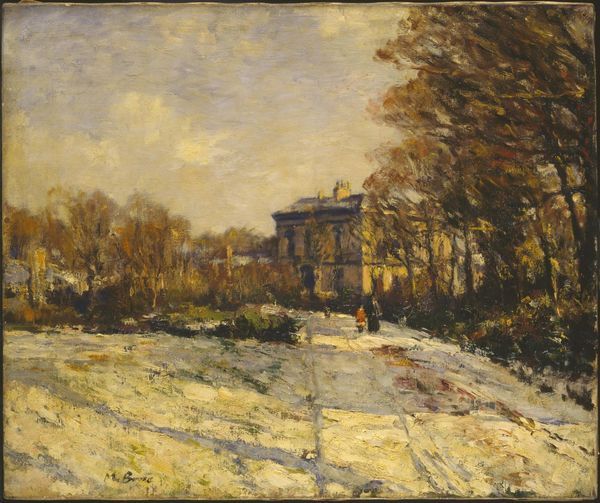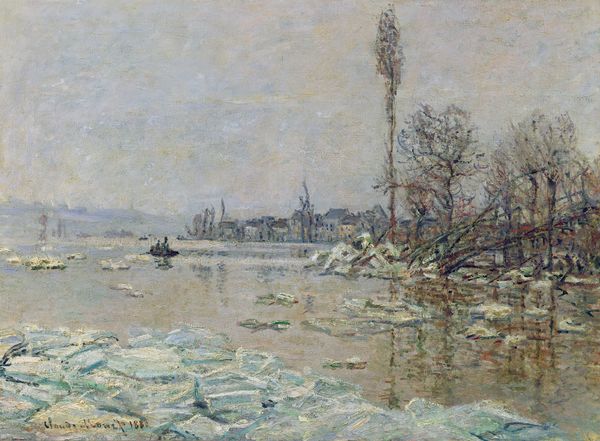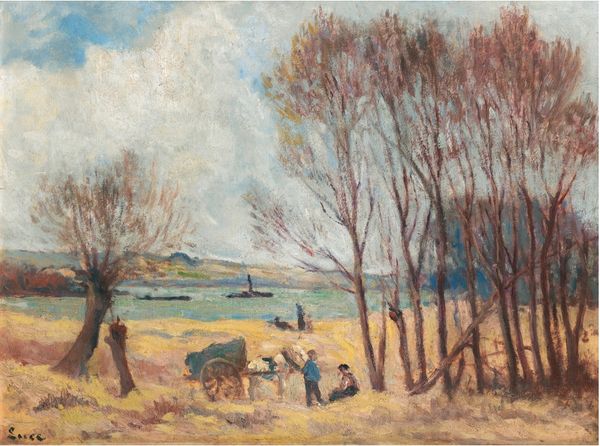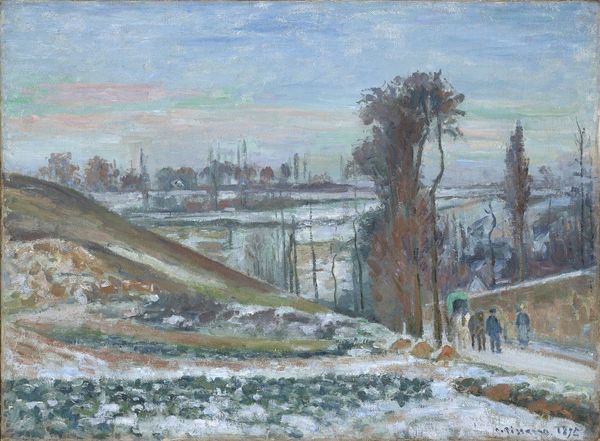
painting, plein-air, oil-paint
#
painting
#
impressionism
#
plein-air
#
oil-paint
#
landscape
#
impressionist landscape
#
oil painting
#
romanticism
#
the-seven-and-five-society
Copyright: Public domain
Curator: Ernest Lawson’s “Windy Day, Bronx River,” residing here at The Phillips Collection, offers a striking vista. The date is unspecified, leaving us to contemplate its moment in time. What's your initial take on this piece? Editor: Brisk. The wind practically whips off the canvas. The palette is limited, almost monochromatic, but that layering of blues and whites gives such a palpable sense of the cold and the movement in the air. Curator: Lawson, associated with the art collective "The Eight" and later "The Ten", often depicted everyday scenes with an Impressionistic bent, emphasizing the working class. Consider this in light of the early 20th-century American art scene— how does that frame your interpretation? Editor: Well, you've got the raw materiality right there. The visible brushstrokes, thick impasto suggesting not just the scene, but the physical act of applying paint, the labour that constitutes making. Look at how he captures the rough textures of the buildings! And is that… snow piled everywhere, dirty and packed down? Curator: Absolutely. He's known for capturing these very aspects. There is an unvarnished realism contrasting the romanticized landscapes of earlier painters, suggesting the grimier aspects of modern urban life, albeit with a delicate, almost romantic filter. Editor: And it's precisely that contrast I find interesting. The delicate touch in depicting what must have been a fairly grimy reality speaks to a conscious artistic choice. He elevates this very place, transforms industrial squalor to visual poetry through sheer paint. I want to see that thick application of paint! What kind of brushes and knives would he have been using? Curator: His methods of plein-air painting would have also influenced this outcome, setting him against other more formal and studio-based landscape practices of that period. His capturing the immediate atmosphere of a location shows us his artistic skill! Editor: It challenges traditional hierarchy that has long placed landscapes like this beneath still life, for instance, by representing urban scenes from working class people. It makes us contemplate what Lawson would be doing on this given windy day. Curator: I appreciate you emphasizing the work and class dimension in Lawson’s oeuvre, helping our audience see his process on location. His portrayal of the city offers more than aesthetic beauty. Editor: Likewise, considering the artistic values behind works like this can reveal much about our evolving understanding of artistic labour itself. Thank you!
Comments
No comments
Be the first to comment and join the conversation on the ultimate creative platform.
